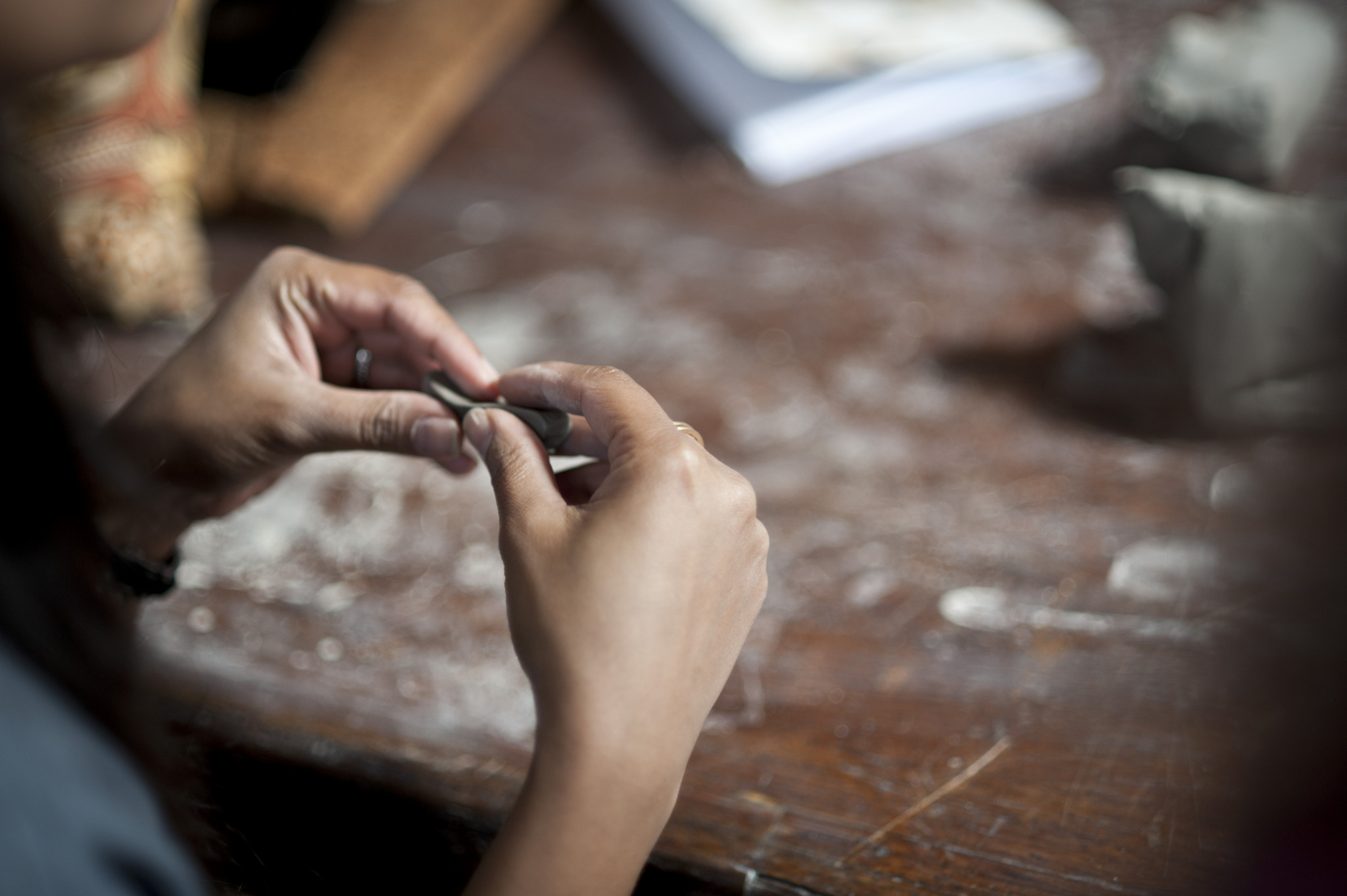‘Museums and our Relationship with the Material World’ @ Clay Cargo Boat – Kings Cross, London

On a rainy summer afternoon in August 2015 a small group of museum practitioners gathered on a canal boat in Kings Cross for an afternoon session investigating and experimenting with the links between museum collections and our relationship with the material world. We wanted to consider what the benefits and impact might be of activities like handling, making, fixing and repairing in a museum context.

The event built on four years Happy Museum experimentation with this subject through funded commissions ranging from the hands on people-centred design focus of the ReMake project at the Derby Silk Mill and working with craft makers exploring creative play and the natural environment in Craftplay at Bilston Craft Gallery, to the traditional woodland crafts at the heart of Ceredigion Museum’s Harvesting the Knowledge. Other commissions focused on our direct relationship with objects including the Waste Not exhibition at the Lightbox and object handling at the Imperial War Museum North.
We were keen to bring our Happy Museum thinking together with the work of Clayground Collective who combine public art, education and research with a view to renewing people’s engagement with clay – the material itself – celebrating its role in cultures around the world and at technology’s leading edge. In particular we were interested in their research strand – Thinking Hands (Report here) which investigates the role of hand skills’ development in seeing, thinking and learning.
As neurophysiologist Roger Lemon identifies in this report – ‘There are ten times as many channels of information feeding back from your hands to the brain as there are channels going out from your brain to your hands. Feedback or “sensory re-afference” happens every time you move, handle a tool or explore a new surface. We move, not to move the world, but to generate sensory feedback, called haptics.’
Our event was attended by museum practitioners from Derby, Ceredigion, Design, London Transport, and Manchester Museums as well as the nascent Museum of Homelessness. We were joined by representatives of organisations such as South London Makerspace, Camden Libraries, the Restart Project and the Crafts Council.
The day focused on investigating museum practice that explores our relationship with the material world. What does it look like? What does it feel like? What is the impact? In the spirit of the discussion the event combined talking with engagement with ceramic artifacts led by freelance educational archaeologist Mike Weber and making with clay led by Duncan Hooson and Julia Rowntree from Clayground. This was valuable, as one participant observed ‘because it used making as both the focus of discussion and a technique to facilitate discussion, this created the conditions for both open-ended conversation and insightful and focused dialogue.’ Other participants described the resulting dialogue as richer and more open, level, stimulating, expansive and constructive.
A great description of the day can be found in a blog by Alice Briggs from Ceredigion Museum.
Participants left with many ideas and new lines of enquiry, including ambitions to:
‘Challenge organisations with a strict hands-off policy to engage with these questions more readily.’
‘Encourage museums to do much more to draw attention to embodied resources (not just media/materials but water and energy) and environmental impacts of the things they display, drawing attention to their origins.’
‘Explore new ways for people to engage with historical collections, and how touch plays a big part in that. Whether that be encouraging someone to kneel down to view an object (and as they do this they notice that the surface of the floor feels cool), or simply moulding, holding or stroking an object and the effect that this has on anchoring the experience and stimulating new thoughts.’
‘Explore how museums could use making informally. Understanding the potency that working with materials can have on our thinking – how can we insert some really simple hands on making into museums? Just using language to explain things might not be enough.’
‘Get people interested from a very young age in advanced materials, technology and techniques.’
‘Focus on the role of making in terms of well-being.’
Happy Museum will use the outcomes of this day to shape an larger open event in 2016 bringing together a wider group to investigate these issues further. If you would like to attend, or to contribute in some way, please contact us at happymuseumproject@gmail.com.


